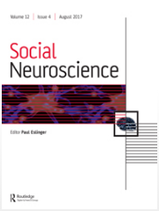Paper by Dr.
Abe and Dr.
Yanagisawa is published in “Social Neuroscience”
A paper by researchers, Ryuhei Ueda, Assistant Professor Kuniaki Yanagisawa, Associate Professor Nobuhito Abe and their colleagues, entitled, “The Neural Basis of Individual Differences in Mate Poaching” was published in the “Social Neuroscience Vol.12”.
The study tested the hypothesis that individual differences in orbitofrontal cortex activity (a region implicated in value-based decision-making) are associated with partner preference that could lead to mate poaching. The study was conducted using functional magnetic resonance imaging (fMRI) at Kokoro Research Center.
 Ueda R, Ashida H, Yanagisawa K, Abe N (2017). The neural basis of individual differences in mate poaching. Social Neuroscience, 12 (4): 391-399
Ueda R, Ashida H, Yanagisawa K, Abe N (2017). The neural basis of individual differences in mate poaching. Social Neuroscience, 12 (4): 391-399http://www.tandfonline.com/doi/full/10.1080/17470919.2016.1182065 ※認証有り
●ABSTRACT
This study tested the hypothesis that individual differences in the activity of the orbitofrontal cortex, a region implicated in value-based decision-making, are associated with the preference for a person with a partner, which could lead to mate poaching. During functional magnetic resonance imaging (fMRI), male participants were presented with facial photographs of (a) attractive females with a partner, (b) attractive females without a partner, (c) unattractive females with a partner, and (d) unattractive females without a partner. The participants were asked to rate the degree to which they desired a romantic relationship with each female using an 8-point scale. The participants rated attractive females higher than unattractive females, and this effect was associated with ventral striatum activation. The participants also indicated lower ratings for females with a partner than for females without a partner, and this effect was associated with parietal cortex activation. As predicted, the participants characterized by higher orbitofrontal activity demonstrated a greater willingness to engage in a romantic relationship with females who have a partner compared with females who do not have a partner. These results are the first to provide a possible neural explanation for why certain individuals are willing to engage in mate poaching.
KEYWORDS: fMRI, individual differences, love, orbitofrontal cortex, reward
2017/06/29